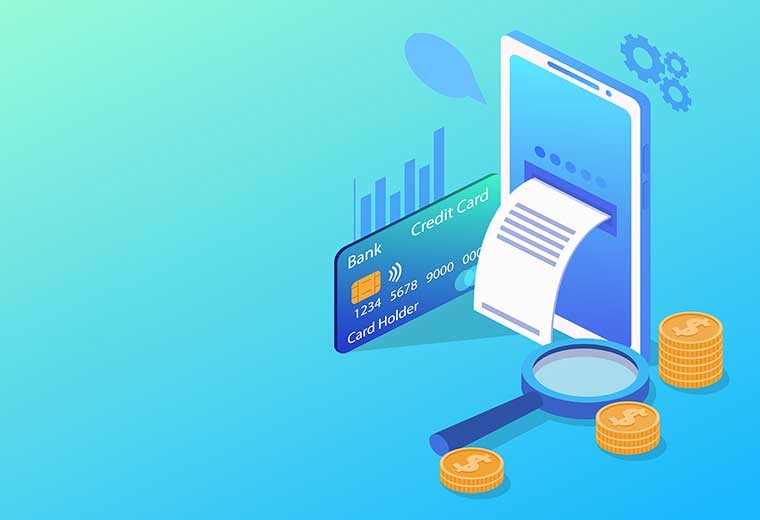Whether you are a small business or a huge eCommerce platform, there is a need to accept and process payments from your customers. At first glance, accepting online payments may seem like a complex process and require a lot of effort (creating a merchant account, strengthening payment security and fraud protection, having a security certificate, etc.). But all this may not be required if you use a payment system that carries out all transactions.
When choosing a payment system, first of all, you should understand that it must meet the requirements and needs of both your business and your customers. Therefore, the payment processing process should be secure, convenient, simple and fast, as well as supporting various payment methods and suitable for your platform or mobile application. The wrong choice will lead to errors in the system, failures in payments and loss of customers. Let’s see how to avoid this!
How does the payment system work?
A payment system is a service for authorizing and processing payments made via debit/credit cards. During the payment processing process, all data is encrypted and protected by the system protocols, which ensures the security of the purchase process between the seller and buyers. Payment systems can perform various types of transactions: authorization, sale, return, cancellation, etc.
While for the buyer, the payment process is just filling out a form, behind it are several institutions and services that process the payment in a few seconds. For a better understanding of the sequence of this process and the place of the payment system in it, we suggest studying the illustration.
What criteria determine the choice of a payment system?
Having figured out what payment systems are and what functions they perform, it’s time to understand how they differ and how to choose the right one for your business. Below are the criteria to consider when choosing:
- Geography. No one knows your market and industry as well as you. Therefore, you should check the representation of the system in the countries of distribution, as well as in the country of registration of your business. Also, do not forget to consider possible expansion to other markets and countries.
- Supported platforms. In most cases, payment systems can be integrated into both the site and the mobile application, but some specialize in one platform. If you use multiple platforms, make sure the payment system is suitable for each. Also explore customization options for perfect sync.
- Integration method. This criterion determines how secure, fast and compatible with your platform the payment system will be, and includes the following types:
- hosted (all processes are performed and controlled by the payment system, all data also belongs to the service; you are not responsible for process control and security, you get fewer conversions, as buyers leave your site during the transition to the system; nevertheless, this option may be suitable small business)
- Direct Post (the system is integrated into your platform using the API, but the data is stored on the service server; you get full customization, but due to sending data to the system, this method is not considered safe);
- non-hosted or integrated (you get full control and customization; buyers do not leave your platform to pay, so all data is stored on your server; due to the collection of a large amount of buyer data, most often the security of your platform must be confirmed by PCI DSS certification , and you will also need the help of developers to integrate the system using the API).
- Payments and commissions. Each payment system charges fees as the process uses third party tools to process and authorize payments. This may include setup fees, monthly fees, transaction fees, international transaction fees, and more. Choose a system with a cost that suits your business, and read the documentation carefully to avoid hidden fees.
- Supported payment methods and currencies. Please make sure that the chosen payment system supports popular (especially in your country and industry) payment methods: credit/debit cards (for example, Visa, MasterCard, AmericanExpress) and e-wallets (for example, ApplePay, Alipay, WeChat Pay). If your platform is international, you will also need multi-currency support. Some payment systems handle over 100 currencies and even cryptocurrencies.
- Documentation and support service. This moment is the most important for your development team. If you want a system to integrate quickly and work perfectly with your platform, choose one that offers clear integration guides and ongoing support. We are sure that you do not want to get a bunch of errors during payment processing due to incorrect documentation or wait a week for confirmation from the support service
- Allowed product type. Some systems only support payment for physical products or only for digital products. To be 100% sure that your type of product is supported, it is best to double-check this information before you start working with a particular payment system.
If some details of the described are not entirely clear or you need help choosing a payment system or integrating it, the Company team is ready to share their experience and find the best solution for your business.
Our Experience: Stripe, Hipay, Ixopay
In order to give you a clearer idea of the main functions of payment systems and how they can differ, we will briefly describe those that we used most often with our European customers: Stripe, Hipay, Ixopay.
Stripes
- Available countries: 30+ countries (mainly Europe and North America).
- Supported Platforms: Web, iOS, Android
- Payment methods: all major types of credit and debit cards, e-wallets, bank transfers, etc.
- Currencies: 135+ currencies, Bitcoin.
- Fees: No setup fee, no monthly fee, 2.9% + $0.30 per transaction fee. The service also offers customized solutions for large companies.
- Competitive advantages: clear documentation that allows you to integrate the system very quickly (usually takes no more than one day for our team), no unexpected errors and problems in the system, excellent fast support service and easy customization for any type of platform.
- Additional solutions: Atlas (a platform to support the development of startups), Connect (a platform with a large number of tools for creating a marketplace and easy payment to suppliers), Radar (risk management and fraud protection), Sigma (customized reports for your business), Climate (a percentage of each purchase goes to the development of technologies to combat climate change).
HiPay
- Available countries: Europe, North America
- Supported Platforms: Web, iOS, Android
- Payment methods: 220+ different methods – all major credit and debit cards, e-wallets, bank transfers, etc.
- Currencies: 150+ currencies.
- Fees: no set-up or monthly fees, transaction fee depends on monthly business turnover + fixed amount ( +0.25€ per transaction, iDEAL: +0.79€ per transaction).
- Competitive advantages: fraud protection (3D secure), a large number of currencies and payment methods, which makes the platform truly international.
- Cons: Documentation for service integration is described by our developers as not very clear.
- Additional solutions: data analytics with useful insights for your business, real-time reports, automated bank reconciliations, special plans by business type (Professional, Enterprise, Marketplace).
Ixpay
- Available countries: wherever you can accept payments
- Supported Platforms: Web, iOS, Android
- Payment methods: 200+ main methods
- Currencies: whatever is supported by your adapter
- Fees: Setup fees and transaction fees depend on your business type and turnover
- Competitive advantages: this service is an aggregator of payment systems, which can be seen from its diverse functionality; you can purchase your own white label platform
- Cons: delays in the payment planner
- Complementary Solutions: Uses just one API to integrate with an adapter, payment service provider (PSP), processor, resource planning (ERP), BI system, or other third-party service you need. Also available are the Smart Routing Engine (control of the user’s path on the platform), risk management system and reconciliation and processing of accounting documentation.
Conclusion
Due to the convenience and simplicity, the volume of online payments (especially mobile) is increasing every year, which makes the integration of your platform with the payment system the main expectation of users when shopping.
When choosing a payment system for your business, make sure that you
- chose the one that has the perfect value for money,
- take into account the characteristics of your sector and country, as well as popular payment methods and currencies,
- studied all the documentation about payments and system integration in order to avoid surprises during payment processing,
- explored the additional solutions that the service offers, as they can be very useful in business automation and security.
If you still have questions, need help from developers in integrating a payment system, or have an idea for creating an innovative product, contact our Company team and we will be happy to help!
You also need to create a financial mobile application, then you can count on the company!

